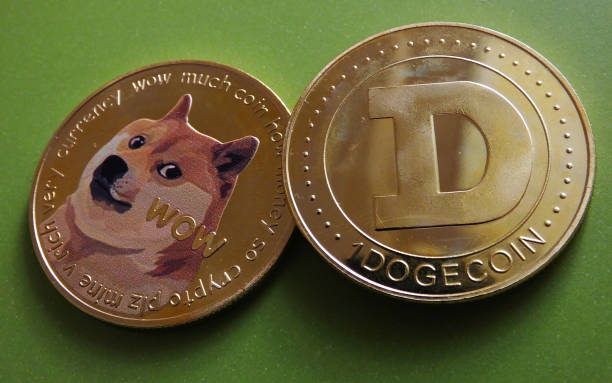Cryptocurrencies are a form of digital money that rely on distributed networks and shared transaction ledgers to combine the core ideas of cryptography with a monetary system to create a secure, anonymous, traceable and potentially stable virtual currency.
Bitcoin was the first cryptocurrency and remains the most popular. However, there are now thousands of cryptocurrencies with various levels of popularity, value and originality.
Cryptocurrencies are named such because of their relation to and use of the science of cryptography. Cryptography is the study of the methods of encrypting information, primarily with the intention of sending a message securely and privately but also for tasks such as data security and authentication. Crypto, the prefix in both words, comes from the Greek word kruptos, which means “secret.”
Cryptocurrencies incorporate many of the technologies and theories developed by cryptographers in order to create a digital exchange system that is resistant to both censorship and fraud.
Cryptocurrencies other than Bitcoin are often referred to as altcoins, although some leaders in certain altcoin communities take offense to that term.
The intention behind the creation of cryptocurrencies is to make a system superior to the fiat based system most people use today. Cryptocurrencies are backed by math rather than the word of a government or financial institution. While they, like all currencies, still depend on their perceived value, their scarcity is based on math and cannot be adjusted by any one group or person. They aren't tied to the availability of physical goods, like gold, nor can they be artificially created by governments or financial institutions like dollars.
Beyond their mathematical backing, cryptocurrencies also generally strive to break down the barriers created by the centralization and concentration of traditional currencies. They use a distributed network to allow for p2p (Peer-to-peer) transaction system without the need for third parties. In order to keep this secure, cryptocurrencies utilize mathematical algorithms and a public ledger to ensure that every transaction that takes place is legitimate.
Cryptographic algorithms are the mathematical systems behind cryptocurrencies that keep the entire system running. In order to ensure every transaction is legitimate, complex mathematical equations are used to link each account with the amount of virtual currency the account holder would like to spend. Users, commonly referred to as miners, dedicate their computing resources to solving these equations and are generally rewarded with a small amount of cryptocurrency.
Bitcoin uses the proof-of-work algorithm SHA-256, as do many other cryptocurrencies. However there are several variations and alternatives, including SHA-512, scrypt, X11, dagger, and proof-of-stake algorithms.
While there are many altcoins that are simple clones on the Bitcoin system, the most successful ones tend to have a unique hook or advantage that Bitcoin either can't or chooses not to provide.
SHA-256 and all other proof-of-work algorithms work by adding complex mathematical problems that aren't completely necessary to ensure security. Instead, the problems are made purposefully complex so that it takes more computing power to mine coins, resulting in a continual arms race between GPU and ASIC (Application-specific integrated circuit) miner developers and the growth of the Bitcoin market.
Scrypt is the second most popular algorithm and like SHA-256, is another proof-of-work algorithm. Scrypt is designed to be easier for regular users to mine. It’s less complex and shorter mathematical equations, which are easily solved by computers' CPUs rather than GPUs. However, ASICs designed specifically for scrypt based currencies are starting to hit the market and many fear that will increase the difficulty of mining. Scrypt's biggest claim to fame is Litecoin and Dogecoin, arguably the two most well known altcoins
This is where Dagger claims to have an advantage. Dagger is similar to Scrypt but has more memory (RAM) intensive computations. The hope is that by turning the focus on RAM rather than GPUs and CPUs, even ASICs designed specifically for Dagger will theoretically have a minimal advantage over someone buying a large amount of RAM at a computer store. We have yet to see it in use, but it is the planned mining method behind the much hyped Ethereum project.
X11 is similar to the SHA-256 algorithm in that it is very complex. However, it shares a focus on CPU computations just like scrypt. Like SHA-256 and Scrypt, ASIC miners will eventually be created for it and will likely ruin mining for CPU/GPU miners. In the meantime, it remains a relatively “fair” mining algorithm. It is currently used by the recently released (and increasing in value) Darkcoin.
Proof-of-work algorithms instead “mint” coins based on how many coins each user already holds. The computations needed to keep the network secure are not made overly complex like SHA-256 and are only done to ensure transaction validity. Users simply have to leave their computers on and allow short, simple computations to run in the background in order to collect coins. Some cryptocurrencies, like Peercoin, use a combination of proof-of-work and proof-of-stake mining.
Of course, mining is not the only differences between cryptocurrencies. Darkcoin was released back in January and provides a way for transactions to be completely anonymous. While a blockchain still ensures every transaction is valid, it is impossible to track movements through it. CryptoNote is another anonymous technology that packages sales and purchases of bitcoin together in order to conceal the identity of the individuals involved in a purchase. Bytecoin was the first cryptocurrency to take advantage of CryptoNote but so have several others since its release.
In addition to advances made by the development of new cryptocurrencies, software advancements that are laid on top of existing cryptocurrency blockchains continually add functions to and abilities to cryptocurrencies. Work is also being performed on the actual cryptocurrencies themselves.
Most cryptocurrencies are open-source. It is the only way users can be assured the creators didn't add something that would enable them to somehow cheat the system. With that said, each cryptocurrency generally has a core group of developers that can add, subtract or modify features.
Each coin is limited in how much it can be changed. The more popular the coin, the larger the blockchain and the harder it is to implement large-scale changes. Bitcoin, for an example, would have a hard time switching from SHA-256 to scrypt or another algorithm because of the large number of people who hold wallets and are mining. Nevertheless, it is technically possible. Features and security patches can be added to cryptocurrencies as needed.
Digital currencies have been notoriously unstable, but that doesn't mean they have to be. Much of the reason cryptocurrencies are currently unstable is because their market size is still relatively small. Bitcoin, by far the largest cryptocurrency market, is valued at USD $8.3 Billion. For comparison, the total size U.S. annual GDP is USD $17.234 Trillion. As the market cap for cryptocurrencies grows, so will their stability. Once that happens, they have the potential to be more stable than fiat currencies.
Fiat currencies are subject to the controls their governments put on them. Irresponsible and incompetent management can cause the value of fiat currencies to plummet, most noteably demonstrated in the story of the Zimbabwe 100 Trillion Dollar Bill.
Cryptocurrencies are designed to be inherently rare, and their inflation grows at a slow, controlled rate. This potentially gives them more stability than currencies where governments, central banks and financial institutions can simply “add a few zeros” to the end of their bank account as needed.
Cryptocurrencies have the potential to change the financial world and in many ways already have. Bitcoin was the first, remains the largest and has the best chance at achieving mainstream adoption, but there are plenty others with innovative ideas that should not be ignored.









